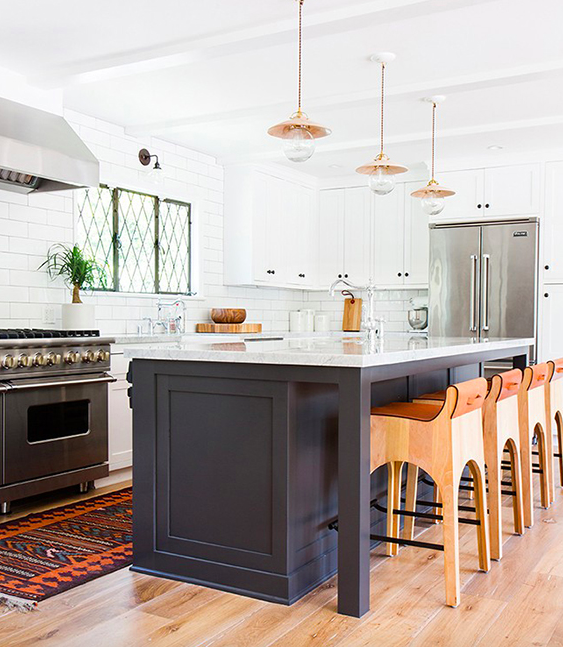Update Your Kitchen's Aesthetic with Costs Legs For Kitchen Island
Update Your Kitchen's Aesthetic with Costs Legs For Kitchen Island
Blog Article
Vital Aspects to Think About When Choosing Legs For Kitchen Island
Selecting the ideal legs for a cooking area island entails a cautious assessment of multiple factors that can significantly affect both performance and aesthetic allure. Amongst these, the option of material plays a crucial function in making sure toughness, while the design must enhance the existing decoration. Additionally, factors to consider such as elevation and weight assistance are important for security and comfort. As we check out these elements, it ends up being clear that each decision can have far-ranging implications for the total kitchen area experience. What subtleties should be thought about in each of these groups to accomplish the ideal balance?
Product Options
When selecting legs for a kitchen area island, recognizing the various product alternatives is vital for attaining both aesthetic appeal and architectural honesty (Legs For Kitchen Island). The option of product significantly influences not just the sturdiness of the island yet also its overall style and capability
Steel legs, usually made from stainless steel or functioned iron, add a commercial and modern feel while guaranteeing longevity and security. These products are resistant to wear and can support substantial weight, making them ideal for bigger islands.
An additional choice is engineered materials, like MDF or plywood, which can be more cost-effective while still supplying an array of coatings. They may not provide the very same level of stability as strong wood or metal. Legs For Kitchen Island. Materials such as acrylic or glass can develop a modern look, though they might need additional assistance to guarantee security.
Eventually, the selection of product for kitchen area island legs should straighten with the preferred functionality and the general theme of the cooking area.
Style and Layout

When taking into consideration design, the form and coating of the legs are critical. Tapered legs can provide a sense of lightness and elegance, while thicker, more robust legs can convey strength and stability. Additionally, the coating-- be it repainted, tarnished, or all-natural-- need to enhance the cabinets and counter top materials to create a unified look.
Moreover, the layout of the legs can additionally mirror personal taste. Custom or decorative legs, such as those including complex carvings or one-of-a-kind geometric forms, can function as centerpieces, adding personality and character to the kitchen area. Ultimately, the right choice will not just boost performance but additionally raise the aesthetic allure, making the kitchen area island a standout feature of the home.
Elevation Considerations
Selecting the ideal height for kitchen area island legs is crucial, as it straight influences both functionality and convenience. The standard height for a cooking area island usually varies from 36 to 42 inches, aligning with typical kitchen counter heights.
:max_bytes(150000):strip_icc()/pink-marble-tile_House-of-Harvee-9f030193ae38484a9cb7ea2d71af66f4.jpg)
It is additionally vital to represent users' preferences and elevations. Personalizing the height can make certain a comfortable experience for all relative, making the kitchen island an extra satisfying and click over here now practical space.
Weight Assistance
Guaranteeing adequate page weight assistance for kitchen island legs is essential for both security and functionality. The kitchen area island frequently serves numerous functions, consisting of food preparation, eating, and extra storage space, necessitating a durable support structure. When picking legs, it is important to consider the general weight ability required based upon the island's intended use and the products that will be put on it.
The selection of product for the legs plays a substantial role in their weight-bearing capacities. Solid wood, metal, and heavy-duty compounds generally offer superior stamina contrasted to lighter products. Additionally, the style of the legs-- whether they are right, tapered, or have a pedestal form-- can influence their capability to disperse weight properly across the structure.
Additionally, the leg positioning should be tactically intended to boost security. Legs positioned at the edges or with a bigger base can much better support heavier tons. Always consult the producer's specs relating to lots restrictions to ensure that the legs can sustain the intended weight without jeopardizing security. In recap, picking cooking area island legs with ample weight assistance is necessary for producing a safe and useful culinary room.
Installation and Maintenance
Proper installment and upkeep of kitchen island legs are vital for making sure longevity and security. This usually involves safeguarding the legs to the island base utilizing appropriate bolts, guaranteeing that the legs are level and lined up.
Once mounted, regular upkeep is required to maintain the stability and look of the legs - Legs For Kitchen Island. For wooden legs, regular cleansing with a damp towel and application of suitable timber gloss can avoid dampness damages and preserve their coating. Steel legs may call for a mild cleaning option to get rid of grease and gunk, adhered to by a dry fabric to avoid rust formation
Additionally, examine the legs routinely for indicators of wear or damages, such as splits or loosened joints. Tightening up screws or bolts as required can additionally lengthen the life-span of the legs. By sticking to these installment and upkeep practices, property owners can make certain that their cooking area island continues to be sturdy and aesthetically go to this web-site appealing for years ahead.
Verdict

Aesthetic comprehensibility is paramount in choosing the design and layout of legs for a kitchen island, as these elements substantially affect the overall atmosphere of the area. Conical legs can provide a sense of lightness and sophistication, while thicker, extra durable legs can convey strength and stability.Selecting the proper elevation for cooking area island legs is essential, as it directly affects both performance and comfort. In summary, choosing kitchen area island legs with ample weight assistance is essential for creating a safe and functional culinary area.
In final thought, choosing legs for a cooking area island demands cautious factor to consider of different aspects, including material options, style, elevation, weight assistance, and setup.
Report this page